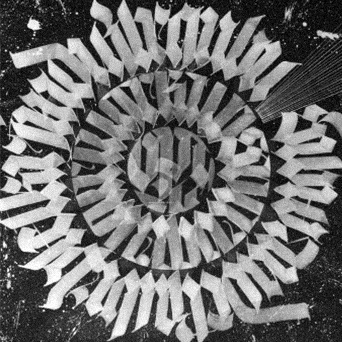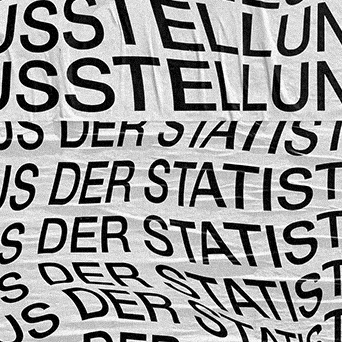Why DEX Analytics, Price Charts, and Pair Explorers Are Your Edge in Token Discovery
Whoa! Okay, so check this out—if you trade on DEXes, you already know fast moves and false positives are the daily grind. My instinct said this would be another tool-heavy pitch, but after digging in I found a few practical angles that actually matter. Short version: raw charts tell you part of the story, pair explorers stitch things together, and good analytics filter the noise so you can act without getting burned.
Here’s the thing. Volume spikes look sexy on paper. They lure people in. But they lie sometimes. On one hand, sudden liquidity inflows often precede legit interest; on the other hand, rug pulls and wash trades can create identical-looking candles. I learned that the hard way—lost some satoshis early on—so now I lean on multiple indicators before clicking buy.
Start with the chart. Use it to identify momentum and structure. Look for sustained buys over several blocks rather than a single fat candle. Watch the order of events—did liquidity appear before volume, or after? If liquidity was added just prior to a massive pump, alarm bells should ring. Seriously?
Medium-term perspective helps. A price retrace that finds support at the initial liquidity band is more convincing than one that bounces off thin air. Also, watch for mismatched timeframes—on-chain events happen in minutes; social hype can lag or lead. I often set alerts on 1m and 15m timeframes simultaneously. That gives me the heartbeat and the trend, together.
Pair explorers are underrated. They show relationships between token pairs that a single chart can’t reveal. For example, seeing a token paired repeatedly with a low-liquidity stablecoin tells a different story than pairing with ETH or a major stable. On one trade I almost jumped into a token because the BTC pair looked clean, but the pair explorer exposed swapped liquidity and repeated creation of tiny pools—clearly gaming the surface metrics.
Oh, and by the way—use the dexscreener official site when you want a straightforward, no-nonsense pair overview. It saves time, and time is money in this game. I’m biased, but when I’ve used it the data was easy to parse and faster than some of the fragmented tools I’ve cobbled together.

Practical Signals I Watch (and Why)
First: liquidity depth across pairs. Not just pool size, but how concentrated it is near the current price. Thin liquidity is like a single plank bridge—one heavy step and it breaks. I usually require a minimum threshold of actual usable liquidity before I commit capital.
Second: token holder distribution. A 10% holder that can dump at any time is a risk. Look for a healthy spread—many small holders and few whales, or at least evidence of vesting schedules. Sometimes I dig into holder charts for 10 minutes and skip a trade because the ownership looked too centralized. Honestly, that part bugs me every time a token with a whale does a “strategic sale.”
Third: transaction patterns. Repeated tiny buys and sells can indicate wash trading. Real organic growth tends to show varied sizes and a steady increase in unique addresses. Initially I thought big trades were always a good sign, but then I started mapping addresses and found clusters that belonged to the same wallet family. Actually, wait—let me rephrase that: big trades can be real, but you need to confirm they come from diverse actors.
Fourth: velocity and age. A token launched yesterday that doubles in price before any real usage is suspect. Age isn’t everything, though—some projects legitimately take off fast. So combine age with on-chain activity: contract interactions, token approvals, and token transfers to multiple addresses.
Fifth: source of liquidity. Was liquidity added from a new address or known treasury? If liquidity is added from the project’s deployer wallet and then renounced, that’s one thing. If it’s coming from freshly minted or anonymous wallets, be wary.
Combining Chart Patterns with On-Chain Proof
Charts give you momentum and market sentiment. On-chain gives you provenance and intent. Together they reduce false positives. For instance, a classic trap is a token that forms a textbook ascending triangle on a 15-minute chart while all liquidity originates from a handful of coordinated wallets. That pattern looks tradable until the wallets pull liquidity post-breakout.
My routine: scan the 1m and 15m charts for entries, cross-check holders and liquidity on pair explorers, then confirm with a quick look for contract interaction spikes. If all three line up, I size in small and set tight risk controls. If not, I walk away. Hmm… it’s boring to walk away, but boring keeps you funded.
Risk management is as much art as math. Position size matters. I use dynamic sizing—smaller on newer contracts, larger on pairs with deep and distributed liquidity. Also, stop-loss placement should account for possible slippage and liquidity depth. If your stop is deeper than the pool will tolerate, you’ll be buying back at a worse price. Learn that once and you won’t forget it.
Tools and Workflows That Actually Save Time
Trade alerts. Set them for liquidity adds, transfers out of deployer wallets, and large buys. Not every spike needs your attention, but specific automated flags should prompt a quick manual check. I set a tiered alert system: green for interesting, yellow for suspicious, red for immediate check.
Dashboard approach beats tab-hopping. Put your timeframe charts, pair explorer, and a basic holder breakdown on one screen. When I do that, patterns emerge faster and cognitive load drops. Seriously—when you’re not toggling fifty tabs, your gut reads the market better.
APIs matter. If you can pull metrics into a tiny script, you can automate the first pass of screening. I’m not going full quant here—just tiny scripts that filter out tokens with under X liquidity or over Y percent held by the top 3 addresses. That saves hours of manual sifting. I’m not 100% sure my filters are perfect, but they reduce noise dramatically.
FAQ
How do I tell a legit pump from wash trading?
Look at unique addresses, transaction variety, and the timing of liquidity adds. Wash trading tends to show repetitive patterns, same-size trades, and liquidity creation timed exactly before price moves. Cross-check with pair explorer data and holder distribution to see if the action is organic.
What timeframe is best for DEX trades?
Use multiple timeframes. 1m for execution timing, 15m for momentum confirmation, and 1h to understand the broader trend. Combining them helps you avoid being whipsawed by short-lived spikes.
Can I rely on on-chain metrics alone?
No. On-chain metrics must be combined with chart context and behavioral signals. Alone they’re incomplete. Together they create a more reliable picture for decision-making.
Alright—so where does that leave you? If you’re hunting new tokens, treat every signal as provisional unless multiple independent checks align. My gut still matters; my tools sharpen it. On one hand, the market rewards those who move quickly. Though actually, the market disproportionately rewards those who survive long enough to trade another day.
I’m biased toward simplicity. Complex models feel sexy, but simple, repeatable checks win more often. Somethin’ about that keeps me sane. Try building a checklist: chart momentum, liquidity provenance, holder dispersion, and transaction diversity. Run that checklist fast and often.
Finally, trade small until you learn the quirks of new tokens and new chains. You’ll make mistakes. I did. You will too. The trick is to make them small and instructive. And yeah—keep a mental note of what smells off; over time your pattern recognition sharpens, and those early instincts stop being just feelings and start being useful signals.













